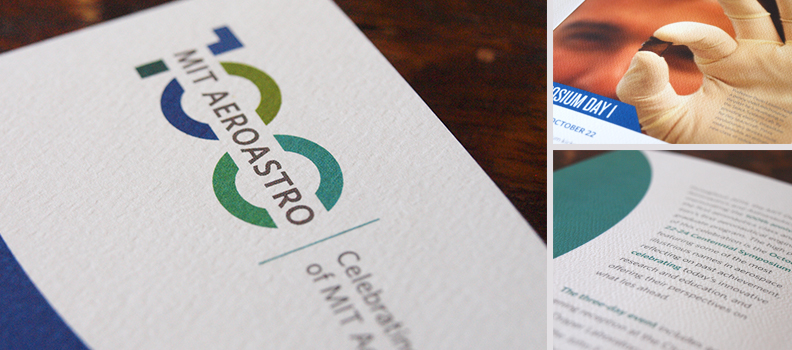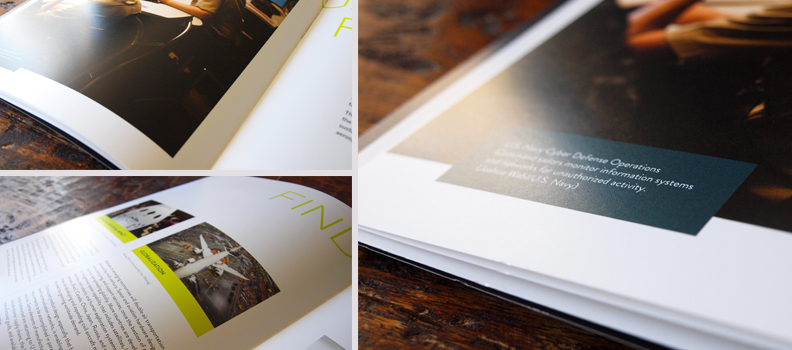Besides having a successful and attractive design, there is something else to consider when having a project professionally printed–Paper. It may seem like an easy choice to make, it’s just paper right? But there are many options available that can really affect the feeling that your brochure, report or invitation conveys.The first place to begin when choosing your paper is whether you want to use uncoated or coated paper. What is the difference? Let’s take a look.
Uncoated
Uncoated paper is more porous and will therefore soak up a lot more of the ink. Because of its sponge-like nature and the ink sinking into the paper instead of sitting on top of it, printed images tend to have a softer, slightly less defined, and warmer appearance. An uncoated sheet is a favored choice for stationary, business cards, brochures, invitations and books. Uncoated paper is available in variety of surface textures–the most common being wove/smooth, linen and laid.
- Wove/Smooth has no particular manufactured texture. It has a smooth feel, however, there are varying degrees of “smoothness”. The percentage of cotton fiber used in making the paper along with the amount of pressure applied are factors in how “smooth” a wove sheet of paper will feel.
- Linen looks and feels like you might imagine from the name, like linen fabric. It has a consistent and fine crosshatch texture to it.
- Laid has a more obvious texture than linen, but again is using horizontal and vertical lines to convey a more hand-crafted appearance and feel.

Coated
Coated paper is uncoated paper that has been treated with a surface sealant, usually clay. Because of this sealing process, it has a less porous surface and the ink tends to sit on top of the paper rather than absorb into it. When the ink sits atop the paper, it gives the printed images a more brilliant, crisp, detailed and vivid appearance (especially black looks much more black on coated paper than uncoated paper). A coated sheet is a popular choice for magazines, brochures, annual reports and advertisements. Coated paper isn’t always glossy, it is available in a wide variety of finishes such as gloss, satin, and matte.
- Gloss paper has a high sheen and a shiny finish. The higher the gloss coating, the greater reduction in ink absorption and therefore, more vivid color and definition. You also get more light reflection which can interfere with readability.
- Satin is a nice compromise as it is less shiny than gloss finish and more lustrous than matte finish. The outcome is a sharp image with vibrant colors with a hint of polish.
- Matte coating does not appear glossy, but has a flat finish. Because of the coating, the ink still lays on top, again, giving images a vivid appearance while maintaining a muted varnish.

How do you choose?
So now that you know all of your choices, how do you choose? A lot of it depends on the feel you are going for. If you want sharp, crisp, vivid colors and high definition photography with deep blacks, a coated sheet would be recommended. If you are looking for a warm, natural and elegant approach, then you might want to go with uncoated. Choosing between the finishes and textures of uncoated vs coated is more of a personal preference, but it’s always wise to consult your professional graphic design team to make the right choice. We have the fantastic resource of paper swatch books in our studio in Boston; these books allow you to see and feel all the various types of finishes. Pricing is also a factor that you might want to consider. This is, again, something your designer can work with the print production team on to determine an estimate.
There are so many options out there, sometimes it can feel overwhelming, but have fun with the process. Finding just the right paper for your project is an important and powerful aspect in conveying your message.



